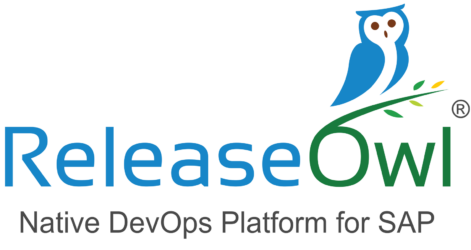SAP Smart Sensing
Filter By
Browse By
- SAP Analytics and AI
- SAP Application Development and Integration
- All SAP Application Development and Integration
- SAP ABAP
- SAP ABAP Development Tools
- SAP ABAP Test Cockpit
- SAP API Management
- SAP BAPI
- SAP Basis
- SAP BRF
- SAP Business Application Studio
- SAP CMS
- SAP Design Studio
- SAP Development Tools
- SAP DevOps
- SAP EAI
- SAP EDI
- SAP Extension Suite
- SAP Fiori
- SAP Fiori Elements
- SAP Integration Suite
- SAP Low Code Application Development
- SAP Low Code Automation
- SAP Netweaver
- SAP Release Management
- SAP UI5
- SAP Web Application Server
- SAP Web IDE
- SAP Business Process Management
- SAP Center of Excellence
- SAP CIO
- SAP Customer Experience
- SAP Data and Data Management
- All SAP Data and Data Management
- SAP BW
- SAP BW/4HANA
- SAP Crystal Reports
- SAP Data Archiving
- SAP Data Center
- SAP Data Governance
- SAP Data Integration
- SAP Data Migration
- SAP Data Quality
- SAP Data Services
- SAP Data Strategy
- SAP Data Visualization
- SAP Data Warehouse Cloud
- SAP DMS
- SAP Document Control
- SAP EIM
- SAP ETL
- SAP ETL Tools
- SAP HANA
- SAP HANA Administration
- SAP HANA Deployment Infrastructure
- SAP HANA Studio
- SAP Master Data
- SAP Master Data Governance
- SAP MDM
- SAP Enterprise Architect
- SAP Enterprise Asset Management
- SAP ERP
- SAP Finance
- All SAP Finance
- SAP Accounting
- SAP AR AP
- SAP Asset Accounting
- SAP Billing Systems
- SAP BPC
- SAP BRIM
- SAP Cash Management
- SAP Central Finance
- SAP Controlling
- SAP COPA
- SAP Cost Center Accounting
- SAP Currency Risk
- SAP e-invoicing
- SAP FICO
- SAP Finance Automation
- SAP Advanced Financial Closing
- SAP Financial Consolidation
- SAP Financial Planning
- SAP FX Risk
- SAP General Ledger
- SAP Global Tax Management
- SAP Hyperion
- SAP Order to Cash
- SAP Payment Processing
- SAP Profitability Analysis
- SAP Rebate Management
- SAP S/4HANA Finance
- SAP SWIFT Compliance
- SAP Treasury Management
- SAP Universal Journal
- SAP Governance Risk and Compliance
- SAP Human Capital Management
- SAP Intelligent Technologies
- SAP Platform and Technology
- All SAP Platform and Technology
- SAP Business Technology Platform
- SAP Cloud
- SAP Cloud Connector
- SAP Cloud Integration Platform
- SAP Cloud Migration
- SAP Cloud Platform
- SAP Cloud Providers
- SAP Cloud Strategy
- SAP Digital Signature
- SAP Container Platform
- SAP HANA Enterprise Cloud
- SAP Digital Asset Management
- SAP Smart Forms
- SAP HEC
- SAP Digital Integration Hub
- SAP Hyperscalers
- SAP Infrastructure
- SAP Messaging
- SAP Quality and Testing
- SAP Security
- SAP Spend Management
- SAP Supply Chain Management
- All SAP Supply Chain Management
- SAP APO
- SAP Asset Management
- SAP Business Network
- SAP Digital Manufacturing Cloud
- SAP Digital Twin
- SAP EWM
- SAP IBP
- SAP Inventory Management
- SAP Label Printing
- SAP Logistics
- SAP Manufacturing
- SAP Manufacturing Automation
- SAP MES
- SAP MII
- SAP MM
- SAP MRO
- SAP MRP
- SAP Order Management
- SAP Plant Maintenance
- SAP PLM
- SAP Production Planning
- SAP S&OP
- SAP SD
- SAP SPM
- SAP Supply Chain Planning
- SAP Track and Trace
- SAP Transportation Management
- SAP System Administration
What Is Smart Sensing?
Sensors have been used in industry for decades to capture specific parameters like temperature. Smart sensors are an evolution of legacy sensors and leverage recent advances in technologies like Internet of Things (IoT) and cloud. Unlike a traditional sensor, a smart sensor can perform advanced tasks such as data conversion, data processing, analytics, and communicating with external devices and the cloud. Many smart sensors can do self-assessment and self-calibration, making them an essential part of digital twins. The data from smart sensors can be leveraged for a plethora of applications, like predictive planning.
What Is Smart Sensing?
Sensors have been used in industry for decades to capture specific parameters like temperature. Smart sensors are an evolution of legacy sensors and leverage recent advances in technologies like Internet of Things (IoT) and cloud. Unlike a traditional sensor, a smart sensor can perform advanced tasks such as data conversion, data processing, analytics, and communicating with external devices and the cloud. Many smart sensors can do self-assessment and self-calibration, making them an essential part of digital twins. The data from smart sensors can be leveraged for a plethora of applications, like predictive planning.
What Is SAP Smart Sensing?
Smart sensing is a capability within the SAP Internet of Things offering that leverages SAP Fiori to identify and track physical objects maintained in SAP S/4HANA. The identification and tracking is done primarily by scanners and smart sensors. Compared to classic IoT scenarios, the SAP smart sensing approach brings the following advantages:
- Tracking of single events rather than recording of continuous data streams significantly reduces the amount of data to process.
- Using auto-ID tags instead of sensors reduces costs.
- Tagging of single items that are part of a delivery or a handling unit allows for a finer granularity and higher precision of the data collected.
While the applications can span multiple functions, a key function that can leverage smart sensing extensively is supply chain. With the help of smart sensors and other technologies like artificial intelligence and machine learning, organizations can build smart, kinetic supply chains, as highlighted in this webinar.
Key Considerations for SAPinsiders
SAP smart sensing is a robust capability to help organizations build components of the intelligent enterprise. However, there are certain key aspects that SAPinsiders need to keep in perspective when embarking on this journey:
Understand the difference between conventional and smart sensors. As mentioned earlier, sensors have been used in industry for a while, but smart sensors take this capability much further. Understanding the “smart” aspect of sensors will allow you to understand where and how to use them.
Think beyond just tracking. While there is no doubt that smart sensors can help track flows or processes in real time, the data often captured by these sensors can be used extensively for generating additional insights. Key advanced analytics approaches like simulation, optimization, and predictive analytics can be leveraged using this data to generate new insights for organizations.
Think end-to-end. A powerful capability of smart sensors is that they can be used to build end-to-end solutions, specifically in process intense functions like supply chains. You can design end-to-end solutions to make your enterprise more resilient and agile.
488 results
-

 Premium
Premium
How to Validate Segregation of Duties Results
Reading time: 20 mins
Upon first running segregation of duties (SoD) reports in SAP BusinessObjects Access Control, management staff can become overloaded with data and assume that the results simply cannot be correct. It is then the responsibility of the owners of SAP BusinessObjects Access Control to prove that the reports are accurate. Step through the process that SAP...…
-

- SAP System Administration
 Premium
Premium
Ensuring SoD Library Quality
Reading time: 14 mins
Learn how to get the SAP user and approver community truly involved in reviewing segregation of duties (SoD) risk rules. Key Concept Companies using SAP BusinessObjects Access Control are ultimately responsible for the thoroughness of their segregation of duties (SoD) library, even though SAP delivers a baseline ruleset (see SAP Note 986996 [GRC Access Control...…
-

 Premium
Premium
What You Need to Know About SAP and SaaS
Reading time: 6 mins
John Wookey, vice president of Large Enterprise On-Demand at SAP, laid out SAP’s strategy for enterprise on-demand applications during a recent keynote at the SIIA ON-Demand Europe 2009. Rather than hosting an entire SAP application, such as SAP ERP Human Capital Management, off-site, SAP will offer Internet-based enterprise applications by subscription. Wookey said these applications...…
-
-

 Premium
Premium
Designing Effective Mitigating Control
Reading time: 10 mins
Because mitigations are normally detective controls, it’s very important that they are designed in a way to maximize their effectiveness. Learn the key concepts for designing, documenting, implementing, testing, and monitoring an effective mitigating control. In addition, examples show how you can use SAP BusinessObjects Access Control risk analysis and remediation to help document and...…
-

 Premium
Premium
10 Tips to Follow During Your CUP Deployment
Reading time: 13 mins
Using compliant user provisioning in SAP BusinessObjects Access Control, you can check in real time if the authorization for a new user or a change made to an existing user’s status is in conflict in any way. Setting up CUP is not simple if your company has not clearly defined and deployed a structured workflow...…
-

 Premium
Premium
American Standard Opens New Markets with SAP NetWeaver MDM
Reading time: 10 mins
ManagementMost Americans immediately recognize American Standard as a foremost brand name in toilets, sinks, faucets, fixtures, and other kitchen and bathroom products. However, the company’s efforts to become a household name in Mexico were hampered by an unreliable Web site and inefficient product data business processes. By building on an ongoing SAP NetWeaver Master Data...…
-

 Premium
Premium
Using SAP Interactive Forms in the ABAP Workbench to Create and Design PDF-Based Print Forms That Address a Wide Range of Print Needs
Reading time: 2 mins
Recognizing that PDF has become the de facto tool for creating and exchanging electronic documents, SAP initiated a strategic development partnership with Adobe Systems — the result of which was SAP Interactive Forms by Adobe. This article explains what you need to know to get started with SAP Interactive Forms for back-end printing purposes; its...…
-
-

 Premium
Premium
Leverage BAdIs to Customize SAP HCM Performance Management
Reading time: 14 mins
More than 50 Business Add-Ins (BAdIs) are available in SAP HCM Performance Management. However, with flexibility comes complexity. See what’s available and how to integrate BAdIs into your process. Key Concept Since R/3 Enterprise (4.7) Extension Set 1.1, SAP HCM supports the whole performance management process with objective setting and appraisals as well as development...…
-

 Premium
Premium
Best Practices for Implementing Sales and Operations Planning
Reading time: 14 mins
The sales and operations planning (S&OP) process can bring about substantial improvements in the way a company manages its supply chain. Learn the building blocks of the S&OP process, what it needs in terms of technology, and how this is supported in different SAP solutions. Key Concept Sales and operations planning (S&OP) is the process...…
-

 Premium
Premium
An Overview of UX Renewal for SAP ERP HCM
Reading time: 6 mins
/MobileIncreasingly, new software is being delivered via the cloud and mobility. As a result, many users want to leverage their existing on-premise systems with hybrid systems. Learn how SAP’s User Experience Renewal gives users the flexibility to enhance their on-premise foundations with hybrid solutions. Key Concept User Experience (UX) Renewal is an SAP program that...…
Become a Member
Unlimited access to thousands of resources for SAP-specific expertise that can only be found here.
Become a Partner
Access exclusive SAP insights, expert marketing strategies, and high-value services including research reports, webinars, and buyers' guides, all designed to boost your campaign ROI by up to 50% within the SAP ecosystem.
Upcoming Events
Related Vendors
Your request has been successfully sent


